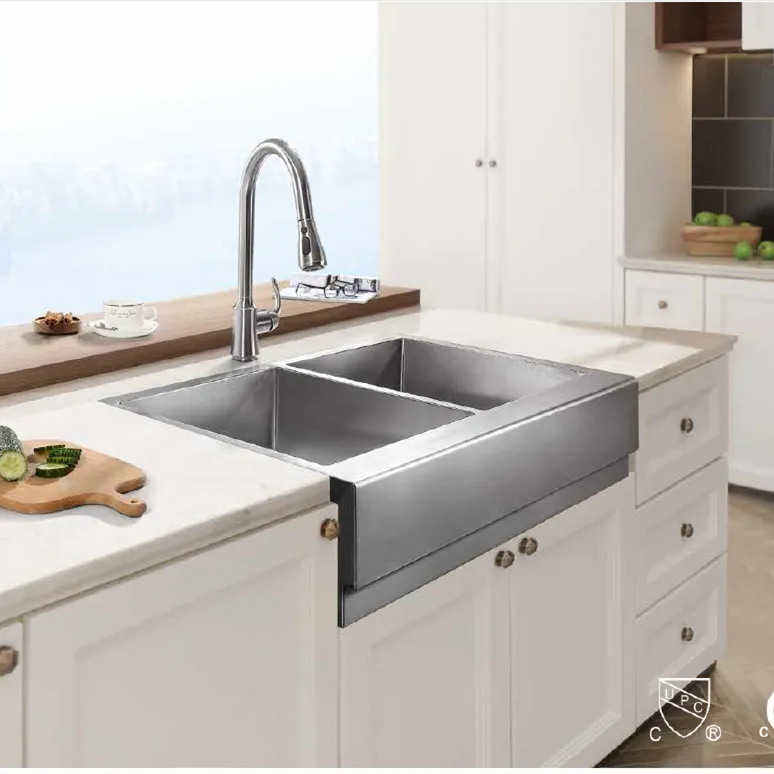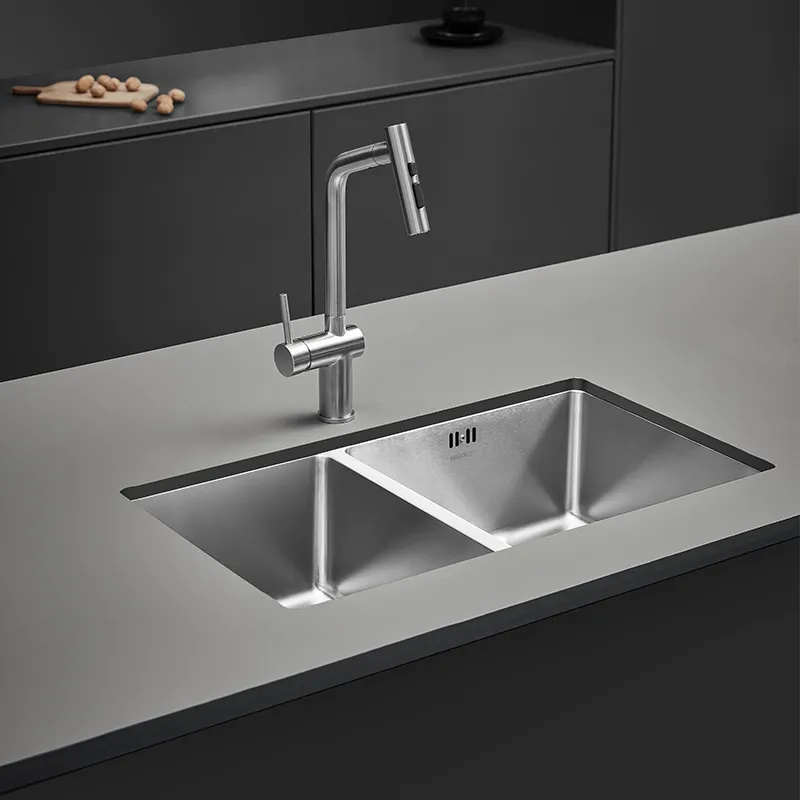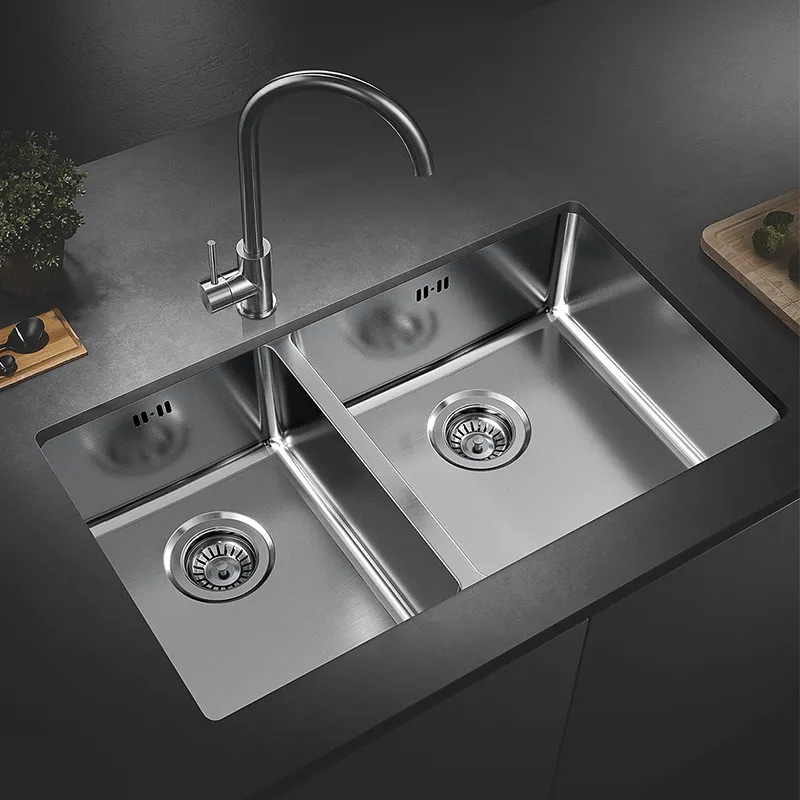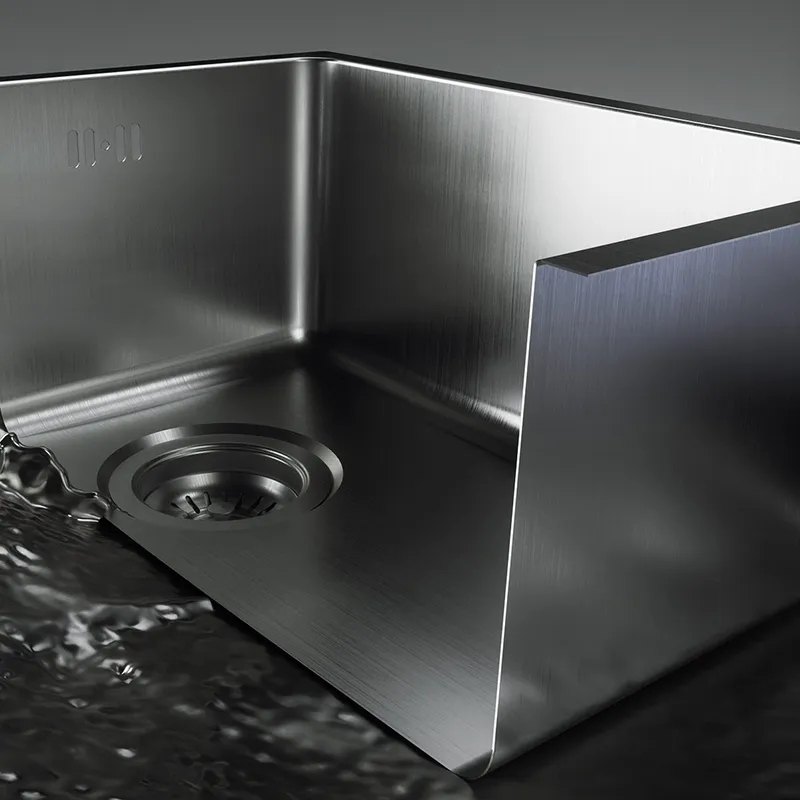Stainless steel sinks are one of the most popular kitchen sink materials due to their durability, corrosion resistance, ease of cleaning, and modern appearance. The quality of the surface finish directly affects the durability, aesthetics, and cleaning efficiency of a stainless steel sink.
To ensure the long-term performance and aesthetics of a sink, a suitable surface finish is crucial. Different surface finishes not only affect the sink's appearance but also its resistance to scratches, stains, and corrosion.
So, what's the best surface finish for a stainless steel sink? Among the many surface treatment technologies available, which one truly meets consumer needs?
This article will delve into the various surface finishes for stainless steel sinks, including their advantages and disadvantages, applicable scenarios, and how consumers can choose the most suitable surface finish based on their needs.

Why do stainless steel sinks require surface treatment?
Even the most durable stainless steel can face various challenges over time. The surface of a stainless steel sink is susceptible to corrosion from everyday use, such as friction, hot water, and acids and alkalis. This is especially true in high-humidity and high-temperature environments like kitchens, where scratches, stains, and rust can easily appear on the surface. Therefore, appropriate surface treatment not only enhances the stainless steel sink's corrosion resistance and prevents stain accumulation, but also improves its aesthetics and lifespan.
What is the best surface treatment for a stainless steel sink?
Surface treatment methods for stainless steel sinks include:
1. Brushed Finish
2. Mirror Finish
3. Sandblasted Finish
4. Anodized Finish
1. Brushed Finish
Brushed finish is one of the most common stainless steel surface treatments, particularly popular on kitchen sinks. This process mechanically brushes the stainless steel surface to create a uniform, fine texture, giving the sink a fresh, sharply defined finish. This brushed finish offers a unique visual effect and effectively hides minor scratches, keeping the sink smooth and clean throughout use.
Advantages:
· Scratch Resistance: The brushed finish effectively reduces the appearance of scratches, making them less noticeable.
· Stain Resistance: The brushed surface is less susceptible to stains, including oil stains and fingerprints.
· Easy to Clean: Because the surface lacks an excessive gloss, it resists stains and is relatively easy to clean.
· Visually Appealing: The brushed texture lends a stainless steel kitchen sink a modern, simple look, and a decorative appeal.
Disadvantages:
· Susceptibility to Scratch: While the brushed surface can hide minor scratches, it can still be damaged by scrapes or friction from heavy objects.
· Requires Regular Maintenance: While the brushed surface is easy to clean, it may show signs of wear and tear over time, requiring regular cleaning and maintenance.
2. Mirror Finish
The mirror finish is a process that uses fine polishing and grinding techniques to achieve a mirror-like finish on the stainless steel surface. Mirrored sinks have a bright, smooth appearance with a high gloss, reflecting the surrounding environment and adding a luxurious and modern feel to the kitchen. They are ideal for those seeking ultimate aesthetics and luxury.
Advantages:
· Attractive appearance: The bright surface of a mirrored sink significantly enhances the overall visual effect of a kitchen, making the space appear more spacious and brighter.
· Good corrosion resistance: The mirrored stainless steel surface is smoother, reducing the likelihood of stains and enhancing corrosion resistance.
· Easy to clean: The smooth surface of the mirror resists stains and oil, making it easy to clean with a damp cloth.
Disadvantages:
· Scratch-resistant: The smooth finish of the mirrored surface is easily affected by friction and scrapes, resulting in noticeable scratches.
· Distinctive fingerprints and water stains: Mirrored surfaces are easily marked by fingerprints, water stains, and smudges, making cleaning more labor-intensive, especially in heavily used environments.
· Difficult to maintain: Mirrored sinks require more careful care, as even minor scratches or imperfections can detract from their aesthetic appeal.

3. Sandblasted Finish
Sandblasting is a process where fine grains of sand are applied to the surface of stainless steel, creating a uniform, rough texture. This treatment creates a matte finish on stainless steel kitchen sinks that is non-reflective and scratch-resistant. Therefore, it is often used for sinks requiring high durability and scratch resistance.
Advantages:
· High Scratch Resistance: The rougher sandblasted surface is more scratch-resistant than mirrored or brushed finishes, making it less likely to leave noticeable scratches.
· High Durability: The sandblasted stainless steel surface is tougher and more durable, making it suitable for high-use kitchens.
· Elegant Appearance: The sandblasted surface lacks an excessive gloss, creating a simple, natural look that is well-suited to modern, minimalist kitchens.
Disadvantages:
· Stain Accumulation: Compared to brushed and mirrored finishes, the rougher sandblasted surface easily accumulates oil and stains, requiring more time and effort to clean. Duller · Appearance: Sandblasted sinks have a relatively low-key appearance and lack the eye-catching shine of mirror finishes, making them unsuitable for those seeking a luxurious, ultra-gloss finish.
4. Anodized Finish
Anodizing is a surface treatment process that uses an electrochemical process to form a hard oxide film on the surface of stainless steel. This treatment not only enhances the corrosion resistance of stainless steel kitchen sinks but also changes the color, creating a richer palette of tones, such as gold, copper, and black. Anodized sinks have a modern and artistic appearance.
Advantages:
· Corrosion Resistance: The anodized film effectively resists oxidation and corrosion, making the sink more resistant to humid environments.
· Diverse Color Options: Anodizing allows you to customize the sink surface with a variety of colors, creating a personalized look for your kitchen.
· Increased Wear Resistance: The high hardness of the oxide film effectively improves the wear resistance of the sink surface.
Disadvantages:
· Fragility: Although the anodized surface is relatively hard, it can still be damaged by impact or friction from hard objects during use.
· Difficult to Clean: Because the surface film is delicate, avoid using overly abrasive cleaning tools, as this may increase cleaning difficulty.

Stainless Steel Sinks: How to Choose the Best Surface Finish?
Choosing the best surface finish for a stainless steel kitchen sink should be determined based on individual needs and the characteristics of your kitchen environment. Consumers can consider the following aspects when choosing:
1. Frequency of Daily Use
If your stainless steel kitchen sink frequently handles large amounts of food residue or hot water, a brushed or sandblasted finish may be more suitable. These finishes are more scratch-resistant and can reduce damage from daily use.
If your sink is used less frequently and you prioritize appearance, a mirror finish can enhance the kitchen's luxurious feel.
2. Appearance
For consumers seeking a high-end, polished look, a mirror finish is undoubtedly the best choice. It creates an extremely bright finish and showcases the luster of stainless steel. For those who prefer a minimalist, durable style, sandblasted or brushed finishes can satisfy their needs, offering a modern look while resisting visible stains.
3. Maintenance Difficulty
For those who prefer less frequent cleaning and maintenance, sandblasted or brushed finishes are relatively easy to maintain, while mirrored finishes require more meticulous care.
Although anodized sinks offer a colorful appearance and strong corrosion resistance, they require care during cleaning to avoid damaging the surface.
4. Budget Considerations
Mirrored and anodized finishes are generally more expensive and are suitable for those with a wider budget. In contrast, brushed and sandblasted stainless steel kitchen sinks are more affordable and suitable for families on a tighter budget.

How does Higold ensure product consistency across large orders?
Quality assurance is a top priority at Higold. The factory uses automated inspection systems, batch testing, and ISO-compliant quality control procedures to ensure that each product meets the same high standards. This is especially important for wholesale orders where consistency matters across thousands of units. Whether you’re buying for resale or for installation, Higold delivers reliable quality every time.


